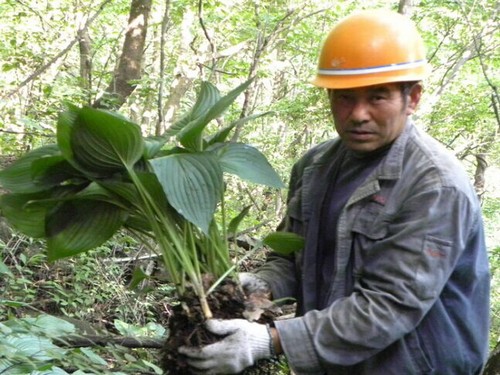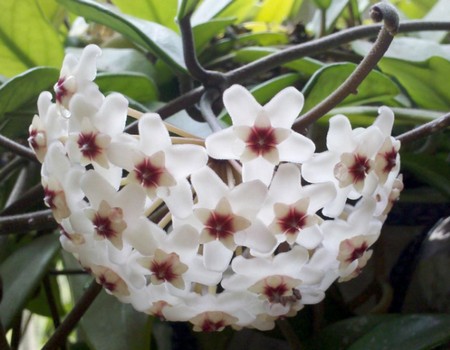Culture methods and matters needing attention of potted Paeonia lactiflora
Peony is known as "flower immortal" and "flower phase", and is listed as one of the "six famous flowers", also known as "Mayflower God". Because it has been regarded as the flower of love since ancient times, it has been regarded as the representative flower of Qixi Festival. Peony is graceful, beautiful, elegant and similar to peony, so it has the laudatory name of "peony is the king of flowers" and "peony is the appearance of flowers".
Paeonia lactiflora is a flower plant with a long history of cultivation, which is very similar to the common peony flowers in our daily life. Very often, peony and peony flowers are planted together to improve ornamental. What we want to introduce to you today is the breeding methods and matters needing attention of peony flowers.
Peony flowers and flower king peony are very similar, before planting peony flowers, we should have the most basic understanding of peony flowers, such as: growth environment, climatic conditions, when to bloom, so that good peony flowers can get half the effort and prepare the effect.
Paeonia lactiflora has certain characteristics of cold tolerance and likes sunny, warm and humid climate. In terms of temperature, the average temperature in July is 27.8 degrees, and the highest temperature can grow well at 42 degrees. It germinates in March every year and blossoms in early May.
Paeonia lactiflora is generally propagated by individual plants. As the saying goes, "the Spring Equinox divides the peony and does not blossom when he is old." Therefore, Paeonia lactiflora is not suitable for transplanting in spring, and it is usually divided after the aboveground part withered in October. When ramet, dig out the root plant, cut it along the root crack with a sharp knife, so that each clump has 3 to 5 full buds and the lower root group (do not hurt the bud eye), then plant it in a wide mouth deep basin with base fertilizer, cover the soil to 3 MUE 4 cm above the bud top, keep the pot soil moist, and the ramet can bloom in the second year after planting.
Peony likes sunshine, cold resistance, good fat, and cool climate in summer. The sandy loam with loose fertile and good drainage is required, and saline-alkali soil is avoided. Pot cultivation of peony should be carried out in October in autumn, with mud lump or mud lump. Such as ramet, its tuber should have bud eyes, otherwise it will not grow branches and leaves or blossom after planting. After planting, the covered soil is 3cm thicker than the tuber, and the basal fertilizer is applied to keep the basin soil moist. The pot soil can be planted in the pot after the culture soil is mixed with the river sand of 1 to 10.
After the lateral buds appear, they can be removed to concentrate nutrients and make the apical buds blossom beautifully. After the flower withered, the pedicel should be cut off in time so as not to seed and consume nutrients.
The culture methods of peony flowers mainly focus on the following steps, hoping to help flower friends to maintain the peony flowers on a daily basis.
1. Temperature
Paeonia lactiflora is a typical temperate plant, which likes temperature and cold tolerance and has a wide range of ecological adaptation. It can be cultivated in open field in northern China with strong cold tolerance. In Nenjiang County in the north of Heilongjiang Province, the annual growth period is only 120 days and the extreme lowest temperature is-46.5 ℃. It can still grow and blossom normally and survive the winter in open field. Summer is suitable for cool climate, but also quite heat-resistant, such as in Bozhou (bo zhou), Anhui Province, and the summer extreme maximum temperature up to 42.1 ℃, can also safely pass the summer.
2. Lighting
Paeonia lactiflora can grow luxuriantly and brightly in the growing period, but it can also grow and develop normally in light shade, and it can appropriately reduce the temperature and increase humidity during the flowering period, so as to prolong the viewing period, but if it is too shaded, it will cause overgrowth, weak growth, unable to blossom or bloom dilute sulfur.
Paeonia lactiflora is a long-sunshine plant, which differentiates flower buds in short-day season in autumn and winter and blossoms in spring. Bud development and flowering should be carried out in long days. If the sunshine time is too short (8-9 hours), it will lead to retardation of bud growth, acceleration of leaf growth, poor flowering and even failure of flowering.
3. Soil
Paeonia lactiflora is a deep-rooted plant, so it requires deep soil layer and strong succulent roots, suitable for sandy loam with loose and good drainage, poor growth in clay and sandy soil, high soil water content and poor drainage, and easy to cause rotten roots. it is suitable to be planted in neutral or slightly acidic soil, but not in saline soil. The growth of fertile soil is better, but we should pay attention to the nitrogen content should not be too high, in order to prevent the growth of branches and leaves, the growth period can be appropriate to increase the application of phosphorus and potassium fertilizer, in order to promote branches and leaves to grow strong and bloom beautifully. Bogey continuous cropping of peony, in the traditional concentrated producing areas of peony, planting peony continuously for many years on the same plot, is a very common phenomenon, which has caused serious losses, not only serious diseases and insect pests, yield and quality decline, and even lead to large area death. Therefore, a scientific and reasonable rotation system must be carried out.
4. Moisture
Paeonia lactiflora has a high and open terrain and a relatively dry environment, which does not require regular irrigation. There is no shortage of water during the growth period, especially in the current operating period and flowering period. Because peony is fleshy root, especially not resistant to waterlogging, stagnant water for 6 hours and 10 hours, often lead to rotten roots, low humid areas are not suitable to be used as peony producing areas in our country, every flood is almost destructive to peony, only in the high open place, the unflooded peony remained.
After the frost, cut off the withered ground part in the flat basin and water the soil properly. The whole dormant period from winter to early spring, the soil should be kept moist, not too dry, but the drainage should be smooth, avoid stagnant water, otherwise the underground root is easy to rot to death. The basin soil should not be too dry during the winter.
5. Fertilization
Potted peony should be placed on the balcony where there is plenty of sunshine, and there is no need to move people indoors in winter. In addition to basal fertilizer, topdressing should be applied in spring sprouting, bud pregnancy and peony bud growth in autumn. Fertilization was carried out half a month after flowering, that is, late June, to supplement the nutrients consumed in the flowering period of peony in time, to prepare material conditions for peony to enter the second vigorous growth period, and to ensure bright flowering in the coming year.
6. Change the basin
The potted peony plant was changed once every two years, and it was carried out at the beginning of October. More resident soil should be retained when changing the basin. If the clump is small, do not split.
[notes]
After potted peony, Frosts Descent cut off the withered branches and leaves to prevent the breeding of diseases and insect pests. During the overwintering period, there is no need to move indoors, put it on the balcony or under the eaves where there is plenty of sunshine, and the basin soil should not be too dry.
Paeonia lactiflora can not be transplanted frequently after planting, otherwise it will damage the root and affect the growth and flowering. In order to make the peony grow well, reasonable fertilization is needed every year. After each fertilization, enough water should be irrigated, and the soil should be loosened immediately to reduce water evaporation. Weeding should be often ploughed in the rainy season.
Before the peony blossoms, after the lateral buds appear, they can be removed in time to concentrate nutrients and promote the beauty of the top bud flowers. After the flower fades, if you do not plan to sow and reproduce, you should cut off the pedicel at any time so as not to seed and consume nutrients.
Time: 2019-06-01 Click:
- Prev

Culture method of potted hairpin flower
Hosta, also known as jade spring stick, white crane flower, jade bubble flower, white jade hairpin, etc., native to China and Japan, perennial herbs, leaves clump, ovate or heart-shaped, flower stems drawn from the leaves, racemes, autumn flowers, white as jade, when not in bloom, such as hairpin, fragrant, cultivated for viewing. The design and color of hairpin is white and elegant.
- Next

Culture methods of orchids
Ball orchid is a perennial vine herb, the stem is vine, internodes have air root, can attach to other things to grow; leaves opposite, thick fleshy, leaf color all green. Flowers axillary or terminal, globose umbels, florets star-shaped clusters, elegant and fragrant. Orchid is a widely cultivated indoor foliage and flowering plant with bright colors and peculiar flower patterns.
Related
- Fuxing push coffee new agricultural production and marketing class: lack of small-scale processing plants
- Jujube rice field leisure farm deep ploughing Yilan for five years to create a space for organic food and play
- Nongyu Farm-A trial of organic papaya for brave women with advanced technology
- Four points for attention in the prevention and control of diseases and insect pests of edible fungi
- How to add nutrient solution to Edible Fungi
- Is there any good way to control edible fungus mites?
- Open Inoculation Technology of Edible Fungi
- Is there any clever way to use fertilizer for edible fungus in winter?
- What agents are used to kill the pathogens of edible fungi in the mushroom shed?
- Rapid drying of Edible Fungi

